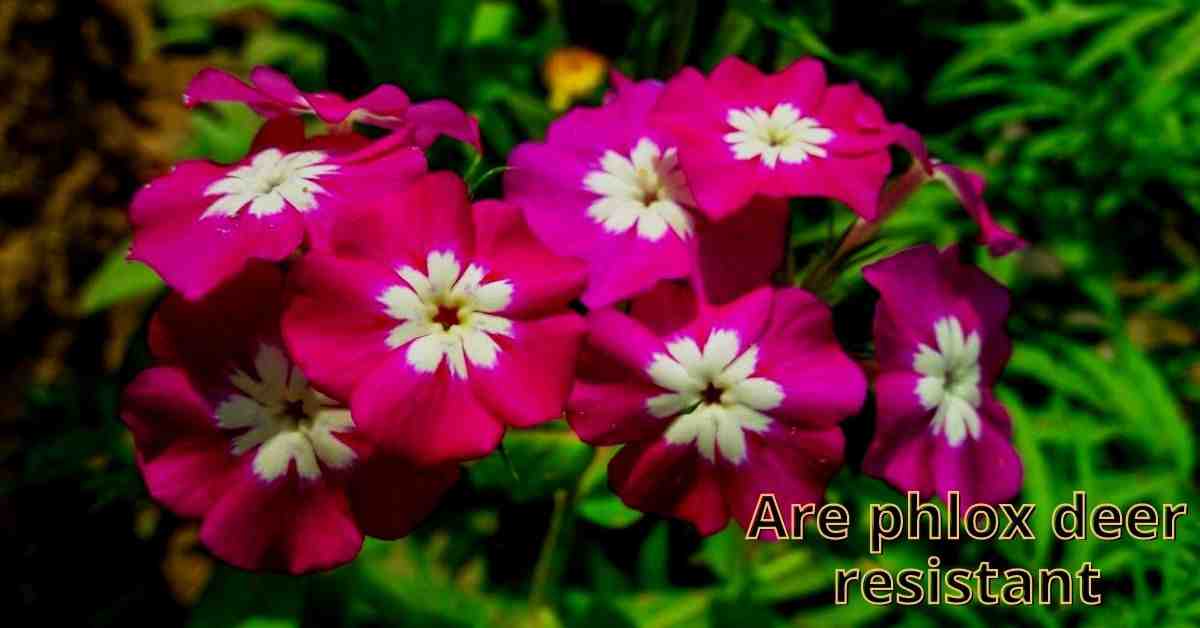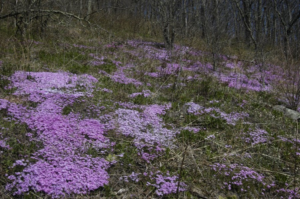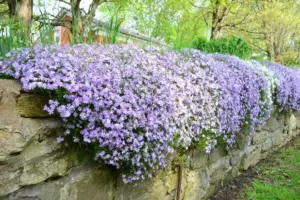Yes, to a certain point, phlox is deer-resistant. Deers normally have a very strong nose to pick up scents. So, they don’t prefer the phlox due to its strong fragrance. There are different types of phlox. Among them, the sand phlox, moss phlox, and creeping phlox plants are effective deer resistant.
Go through the article to learn why are phlox deer-resistant.
Key takeaways
- Deers tend to avoid phlox because of their strong smell.
- Sand phlox, moss phlox, and creeping phlox are deer-resistant.
- To keep deers away from phlox, avoid planting phlox in your garden.
Why Do Deers Avoid Phlox Plant?

Phlox plants are deer-resistant because they are prickly, sap-filled, and have a strong fragrance.
Moreover, the stems of phlox plants are slightly woody and are covered with quite prickly leaves with long, matted, fluffy hair and a wooly texture. This texture of these plants is usually avoided by deer.
Besides, phlox is sap-filled and deers dislike eating sap-filled plans. However, depending on the environmental situation, deer might eat these plants sometimes.
There are 67 varieties of phlox plants and nearly all the varieties are deer-resistant. However, in certain circumstances, deer might eat some of the phlox varieties. Like if the environment is unfavorable or they have a scarcity of food sources.
The Phlox Plants That Are Deer Resistance
Here are some phlox-resistant plants:
Moss phlox:
In the US Department of Agriculture plant zones 3 to 9, the moss phlox thrives. This plant needs a huge amount of sunlight. But for a very hot summer, it will need shedding.
Moss phlox needs well-draining as well as heavy soil of medium moisture levels. The plant doesn’t grow more than 6 inches in height.
They are low-maintenance and reliable. Use on dry banks, cascade, steep, out of containers, and over walls.
It produces a profusion of summer blooms in white, purple, and pink. Moss phlox will also withstand the predation of deer. The phlox is mostly cultivated for its fragrant and colorful flowers.
Moreover, moss phlox will increase the beauty of your garden. The flowers of phlox are insect-pollinated. Eventually, they will attract butterflies and hummingbirds.

Creeping Phlox:
The creeping Phlox grows from July to September. Whereas the sand and moss both will add spring color to your garden.
In the US Department of Agriculture zones 5 to 9, the creeping phlox grows. The creeping phlox takes a few years to grow to maturity. That is on average, two years.
The stem of the plant doesn’t grow more than afoot. Therefore, all creeping phlox types are suitable for ground covers and rock gardens.
They also grow in naturalized or informal areas and the plants can spread naturally. Phloxes also do well in cottage gardens, wildflower meadows, and borders.
The growing condition of every phlox is almost the same with a few exceptions. The creeping phlox prefers humus-laden and medium moisture soil.
This plant will be happy in full sun. But you should always try to shade your plants in hot afternoons. So, if you want to buy a sunblock shade cloth for your plants. Here are some best ones-
- You can use any of them to block direct sunlight.
- The sand phlox grows in the US Department of Agriculture zones of 4 to 8. It is deer-resistant with pale whitish-blue blooms.
- If you give it enough time it will grow more than afoot. Just like other phlox, it is adaptable to full sun. The sunlight requirements vary by species. There are 16 different types of phlox available.
- The sand phlox grows well in dry to medium and well-drained soil. This is a very tolerant plant to climate conditions.
- Sand phlox can grow on shallow soil and even rocky mountains. They are also resistant to drought.
Sand Phlox:
The sand phlox grows in the US Department of Agriculture zones of 4 to 8. It is deer-resistant with pale whitish-blue blooms.
If you give it enough time it will grow more than afoot. Just like other phlox, it is adaptable to full sun. The sunlight requirements vary by species. There are 16 different types of phlox available.
There are deer-resistant plants. Also, learn what to do when tomato plants have too many flowers.

Which Type of Plants Deer Tend to Avoid?
Deers tend to stay away from poisonous plants just like other animals. For example, poppies, tulips foxgloves, and daffodils are toxic plants that a deer will avoid. Already thinking of getting these?
Well, you can if you don’t have pets. Because bulbs, daffodils, and tulips can be dangerous for dogs and cats. So, keep this in mind.
Now, deer also avoid herbs such as lavender, ornamental salvias, and sages. Flowers like bearded irises and peonies are just “stinky” to deer.
Deers have a powerful nose. They can pick up bad smells or poisonous smells at a distance. The deer also avoid plants with strong scents. This is where phlox comes into the picture.
Bonus: Learn the reasons why the aloe plant is turning into different colors.
Frequently Asked Questions
Do deer consume lupines?
Lupines are deer-resistant once grown. Making them an excellent choice for garden fencing. They attract a large number of pollinators in the late spring and early summer.
What animal consumes phlox plants?
Some mammal species, such as the eastern cottontail rabbit and white-tailed deer consume phlox. Sprinkling fox urine around the yard will deter these mammals from accessing the area. But you should always be cautious.
Do deer consume zinnia plants?
If they can’t locate any other food, deer will consume zinnia blooms. When scouting, they will also nibble on those blooms on occasion. Deer deterrents, such as repellents, can be used to keep deer away from your prized flowers.
Conclusion
So, are phlox deer resistant? You should know the answer by now. We hope we have provided you with all the valuable information. Still, for your further queries please visit the website.
- Are Phlox Deer Resistant? (Answer Revealed) - December 16, 2023
- 6 Ways to Bypass Primer Bulb on Weedeater (What to Do) - November 2, 2023
- Why Won’t My Peppers Turn Red [All Reasons & Solutions] - October 24, 2023

Pingback: Introducing Disease-Resistant Varieties Inside your Garden – More Tube Views